 RONA, one of Canada’s leading home improvement retailers, with 425 corporate and affiliated stores, is now partnering with DoorDash, to offer on-demand delivery in as fast as an hour. This partnership spans nearly 200 RONA+ and RONA corporate stores located in seven provinces and over 150 cities across the country. RONA is now the first home improvement and construction retailer on DoorDash in Canada. …”By teaming up with DoorDash, RONA is offering a solution that reflects consumers’ new shopping habits and is further positioning itself as a leader in the industry,” said Catherine Laporte at RONA. “We’re proud to welcome RONA to DoorDash as the first home improvement and construction retailer on our platform in Canada,” said Kyra Huntington, of DoorDash Canada. “We’re looking forward to saving a panicked trip to the store when time is of the essence for home improvement projects.”
RONA, one of Canada’s leading home improvement retailers, with 425 corporate and affiliated stores, is now partnering with DoorDash, to offer on-demand delivery in as fast as an hour. This partnership spans nearly 200 RONA+ and RONA corporate stores located in seven provinces and over 150 cities across the country. RONA is now the first home improvement and construction retailer on DoorDash in Canada. …”By teaming up with DoorDash, RONA is offering a solution that reflects consumers’ new shopping habits and is further positioning itself as a leader in the industry,” said Catherine Laporte at RONA. “We’re proud to welcome RONA to DoorDash as the first home improvement and construction retailer on our platform in Canada,” said Kyra Huntington, of DoorDash Canada. “We’re looking forward to saving a panicked trip to the store when time is of the essence for home improvement projects.”
 President Donald Trump has yet to follow through on his threat to impose an additional 10 percent tariff on Canadian imports, four weeks after he halted “all trade negotiations” over an anti-tariff ad the province of Ontario ran. Trump’s announcement had Canadian exporters preparing for a worst-case scenario: a sweeping levy layered on top of existing double-digit duties. …The White House did not say whether it still plans to impose the tariff when asked for comment. But a separate US official suggested the Trump administration had opted to hold off on additional duties — which would have sent tariffs on Canadian goods to 45% — and instead continue to dangle the threat as the two sides gear up for future talks. “The Canadians know what’s on the table,” said the official. Volpe said a personal intervention by Carney in Asia last month may have helped matters, too.
President Donald Trump has yet to follow through on his threat to impose an additional 10 percent tariff on Canadian imports, four weeks after he halted “all trade negotiations” over an anti-tariff ad the province of Ontario ran. Trump’s announcement had Canadian exporters preparing for a worst-case scenario: a sweeping levy layered on top of existing double-digit duties. …The White House did not say whether it still plans to impose the tariff when asked for comment. But a separate US official suggested the Trump administration had opted to hold off on additional duties — which would have sent tariffs on Canadian goods to 45% — and instead continue to dangle the threat as the two sides gear up for future talks. “The Canadians know what’s on the table,” said the official. Volpe said a personal intervention by Carney in Asia last month may have helped matters, too.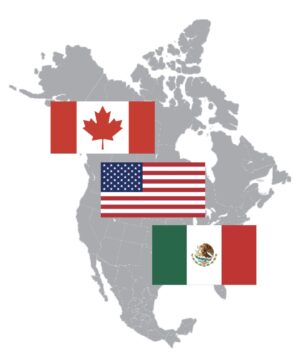 WASHINGTON — American industries ranging from whiskey makers and Wisconsin dairy producers to steel and automobile associations are weighing in on the future of the Canada-U.S.-Mexico Agreement on trade. The continental trade pact, known as CUSMA, is up for mandatory review next year and the Office of the United States Trade Representative has been collecting input on the changes it should consider. CUSMA has been rattled by U.S. President Trump’s massive tariff agenda and many of the submissions urged the administration to restore duty-free trade. The Can Manufacturers Institute wrote to the Trump administration saying steel and aluminum tariffs on Canada are making their products more expensive and causing prices in grocery stores to increase. …The United States Steel Corporation said tariffs on that metal should remain indefinitely. The submissions provide insight into areas that could become irritants in looming negotiations on the critical trilateral trade pact.
WASHINGTON — American industries ranging from whiskey makers and Wisconsin dairy producers to steel and automobile associations are weighing in on the future of the Canada-U.S.-Mexico Agreement on trade. The continental trade pact, known as CUSMA, is up for mandatory review next year and the Office of the United States Trade Representative has been collecting input on the changes it should consider. CUSMA has been rattled by U.S. President Trump’s massive tariff agenda and many of the submissions urged the administration to restore duty-free trade. The Can Manufacturers Institute wrote to the Trump administration saying steel and aluminum tariffs on Canada are making their products more expensive and causing prices in grocery stores to increase. …The United States Steel Corporation said tariffs on that metal should remain indefinitely. The submissions provide insight into areas that could become irritants in looming negotiations on the critical trilateral trade pact.

 The looming closure of a lumber mill in central BC is highlighting the forestry industry’s challenges in accessing an economically viable timber supply — with one academic urging an “emergency response” to deal with it. West Fraser Timber announced it would shut its mill in 100 Mile House by the end of the year. BC’s forestry industry has taken major hits over the last few years, as escalating US duties on softwood lumber imports have piled atop challenges like a major beetle infestation and wildfires, leading to thousands of jobs lost. …UBC professor Gary Bull explained that to have an “economically viable fibre supply,” it needs to make sense financially for a company to transport logs from a forest to its mill. And the viability is complicated by the fluctuating price of lumber. …Bull estimated that insect outbreaks and wildfires have contributed to a 50 to 60 per cent reduction in available fibre near 100 Mile House.
The looming closure of a lumber mill in central BC is highlighting the forestry industry’s challenges in accessing an economically viable timber supply — with one academic urging an “emergency response” to deal with it. West Fraser Timber announced it would shut its mill in 100 Mile House by the end of the year. BC’s forestry industry has taken major hits over the last few years, as escalating US duties on softwood lumber imports have piled atop challenges like a major beetle infestation and wildfires, leading to thousands of jobs lost. …UBC professor Gary Bull explained that to have an “economically viable fibre supply,” it needs to make sense financially for a company to transport logs from a forest to its mill. And the viability is complicated by the fluctuating price of lumber. …Bull estimated that insect outbreaks and wildfires have contributed to a 50 to 60 per cent reduction in available fibre near 100 Mile House.
 The BC NDP’s new
The BC NDP’s new 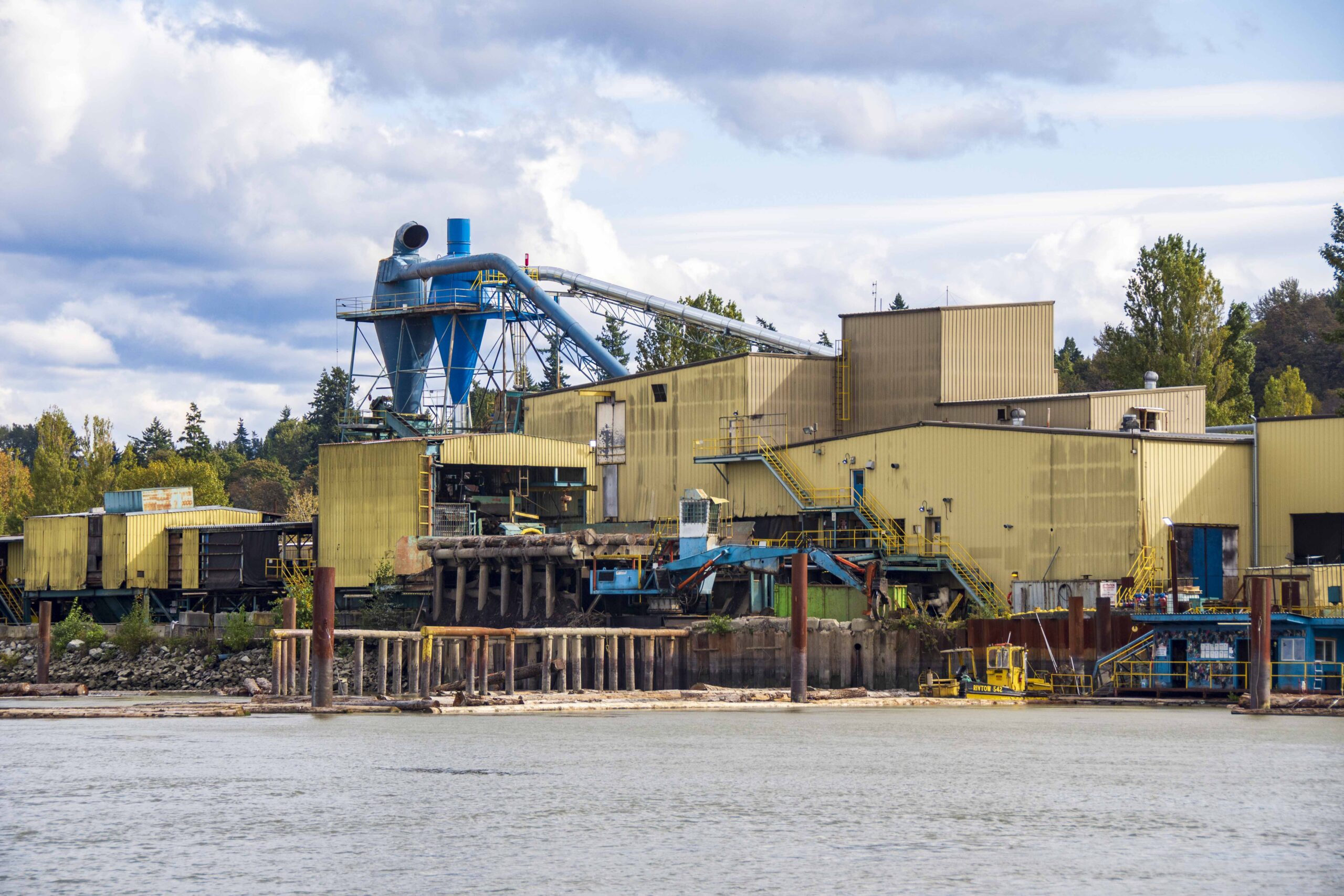 VANCOUVER, BC — A large fire broke out on the banks of the Fraser River in Delta on Thursday morning. Fire crews from Delta and Surrey were called between 9 a.m. and 10 a.m. to the former sawmill under demolition north of the Alex Fraser Bridge on Alaska Way. The land is owned by the Port of Vancouver and the organization confirmed the fire is at the site of the former mill. There are currently no impacts to port operations. …The fire broke out on the site of the former Acorn mill, which stopped operations after a blaze in April 2024. The sawmill was built in 1963 and was acquired by forestry giant Interfor in 2001. It was used primarily to cut specialty timber for traditional Japanese home construction. In 2022,
VANCOUVER, BC — A large fire broke out on the banks of the Fraser River in Delta on Thursday morning. Fire crews from Delta and Surrey were called between 9 a.m. and 10 a.m. to the former sawmill under demolition north of the Alex Fraser Bridge on Alaska Way. The land is owned by the Port of Vancouver and the organization confirmed the fire is at the site of the former mill. There are currently no impacts to port operations. …The fire broke out on the site of the former Acorn mill, which stopped operations after a blaze in April 2024. The sawmill was built in 1963 and was acquired by forestry giant Interfor in 2001. It was used primarily to cut specialty timber for traditional Japanese home construction. In 2022, 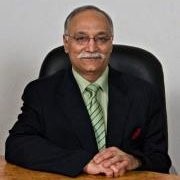
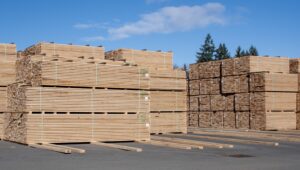 Pierre Poilievre says he’d succeed where Prime Minister Mark Carney has failed, and that New Brunswick’s softwood lumber sector would quickly get a “tariff-free” deal with the US if he was in charge. …Ottawa responded by releasing a financial aid package for the industry that includes up to $700 million in federal loans, “$500 million to supercharge product and market diversification. …Poilievre said that “one of my top priorities as prime minister will be to go down to Washington, get a deal on lumber, make the pitch that they will get more affordable homes if we can get tariff-free access to their market.” …MP Dominic LeBlanc sent a statement…. “In the coming weeks, we will take further urgent action, building on the significant support for the sector announced on August 5, 2025. In addition, Build Canada Homes, a new federal agency that will build affordable housing at scale, will prioritize the use of Canadian-made materials. [Access may require a Telegraph-Journal subscription]
Pierre Poilievre says he’d succeed where Prime Minister Mark Carney has failed, and that New Brunswick’s softwood lumber sector would quickly get a “tariff-free” deal with the US if he was in charge. …Ottawa responded by releasing a financial aid package for the industry that includes up to $700 million in federal loans, “$500 million to supercharge product and market diversification. …Poilievre said that “one of my top priorities as prime minister will be to go down to Washington, get a deal on lumber, make the pitch that they will get more affordable homes if we can get tariff-free access to their market.” …MP Dominic LeBlanc sent a statement…. “In the coming weeks, we will take further urgent action, building on the significant support for the sector announced on August 5, 2025. In addition, Build Canada Homes, a new federal agency that will build affordable housing at scale, will prioritize the use of Canadian-made materials. [Access may require a Telegraph-Journal subscription]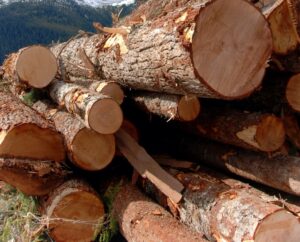 The Nova Scotia Forestry Innovation Transition Trust is investing $1.8 million to assist private landowners and forest contractors in finding new markets for underutilized wood fibre and to support sustainable forestry management. According to a
The Nova Scotia Forestry Innovation Transition Trust is investing $1.8 million to assist private landowners and forest contractors in finding new markets for underutilized wood fibre and to support sustainable forestry management. According to a 

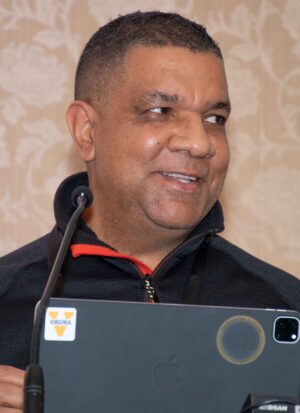
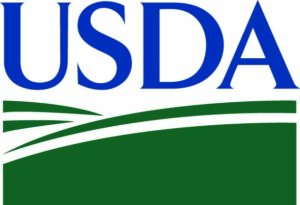 STEVENS POINT, Wisconsin – USDA Rural Development Wisconsin State Director Andrew Iverson announced the Timber Professionals Cooperative Enterprises (TPCE) will use a Rural Development loan of $800,000 to re-open and expand the former Hoffman Wood Fiber sawmill in Shawano County. This investment is through the Timber Production Expansion Guaranteed Loan Program (TPEP). TPCE will use guaranteed loan funds to purchase over 49 acres of real estate and equipment. The equipment will allow TCPE to improve the efficiency of manufacturing wood chips. The project also includes plans to expand capabilities of the site to manufacture new, higher-value products from the same raw materials. The project will create six jobs. …TPCE plans to implement a detailed process to improve productivity involving processes in the wood yard and chip mill. Installation of an automatic log feed deck will help increase production from 2,500 to 4,000 tons per month.
STEVENS POINT, Wisconsin – USDA Rural Development Wisconsin State Director Andrew Iverson announced the Timber Professionals Cooperative Enterprises (TPCE) will use a Rural Development loan of $800,000 to re-open and expand the former Hoffman Wood Fiber sawmill in Shawano County. This investment is through the Timber Production Expansion Guaranteed Loan Program (TPEP). TPCE will use guaranteed loan funds to purchase over 49 acres of real estate and equipment. The equipment will allow TCPE to improve the efficiency of manufacturing wood chips. The project also includes plans to expand capabilities of the site to manufacture new, higher-value products from the same raw materials. The project will create six jobs. …TPCE plans to implement a detailed process to improve productivity involving processes in the wood yard and chip mill. Installation of an automatic log feed deck will help increase production from 2,500 to 4,000 tons per month.


 China’s recent environmental policy shift is transforming the global recycled pulp market. After years of tightening restrictions on solid waste imports, China has now expanded its scope even further by banning certain types of recycled pulp. This development highlights the country’s ongoing goal to eliminate “foreign garbage” and improve the quality and sustainability of its locally produced paper. …In January 2021, China fully implemented the National Sword policy — a sweeping ban on most solid waste imports, including unsorted and recycled paper. …In October 2025, China took its environmental agenda a step further by targeting specific types of recycled pulp — particularly those processed through dry-milling techniques. …The new restrictions have rippled across the global paper recycling supply chain. Exporters that previously relied on China’s massive demand are scrambling to find alternative markets, while Chinese paper producers face delays and shortages in pulp supply.
China’s recent environmental policy shift is transforming the global recycled pulp market. After years of tightening restrictions on solid waste imports, China has now expanded its scope even further by banning certain types of recycled pulp. This development highlights the country’s ongoing goal to eliminate “foreign garbage” and improve the quality and sustainability of its locally produced paper. …In January 2021, China fully implemented the National Sword policy — a sweeping ban on most solid waste imports, including unsorted and recycled paper. …In October 2025, China took its environmental agenda a step further by targeting specific types of recycled pulp — particularly those processed through dry-milling techniques. …The new restrictions have rippled across the global paper recycling supply chain. Exporters that previously relied on China’s massive demand are scrambling to find alternative markets, while Chinese paper producers face delays and shortages in pulp supply.

 Futamura, a Japanese manufacturer of cellulose films and packaging products, has announced a solution to help reduce the quantities of microplastics generated from glitter products. Microplastics are defined as plastic particles less than 5mm in size, which can be either intentionally manufactured at that size (primary microplastics) or created when larger plastic items break down (secondary microplastics). Glitter has been particularly criticised in recent years for its contribution to microplastic pollution in oceans and soil. According to Futamura, biodegradable glitter can be created from its NatureFlex materials [wood pulp], which will safely degrade in the environment it was disposed of after use without producing harmful microplastics. …Currently, glitter based on conventional plastics can still be sold into cosmetic applications due to a transition period granted under the EU’s Microplastics Regulation. However, once this period ends cosmetic applications will also be banned.
Futamura, a Japanese manufacturer of cellulose films and packaging products, has announced a solution to help reduce the quantities of microplastics generated from glitter products. Microplastics are defined as plastic particles less than 5mm in size, which can be either intentionally manufactured at that size (primary microplastics) or created when larger plastic items break down (secondary microplastics). Glitter has been particularly criticised in recent years for its contribution to microplastic pollution in oceans and soil. According to Futamura, biodegradable glitter can be created from its NatureFlex materials [wood pulp], which will safely degrade in the environment it was disposed of after use without producing harmful microplastics. …Currently, glitter based on conventional plastics can still be sold into cosmetic applications due to a transition period granted under the EU’s Microplastics Regulation. However, once this period ends cosmetic applications will also be banned.

 The return of cold and snow at the close of the year typically signal the end of the wildfire season. …Zombie fires, sometimes betrayed by a plume of steam emerging from the bubbling ground in the frozen forest, were once a rare occurrence in the boreal regions that stretch across the far north through Siberia, Canada and Alaska. But in a rapidly heating world, they are becoming increasingly common. The overwintering burns are small – and often hard to detect – but they are transforming fires into multi-year events. …“It is a massive problem,” says Lori Daniels, a professor at the University of BC. Current estimates show that only about 15% of the northern hemisphere is underlain by permafrost, yet these frozen soils contain roughly twice as much carbon than is now in the atmosphere. By burning slowly and at a lower temperature, they release vastly more particulate pollution and greenhouse gas emissions than flaming fires.
The return of cold and snow at the close of the year typically signal the end of the wildfire season. …Zombie fires, sometimes betrayed by a plume of steam emerging from the bubbling ground in the frozen forest, were once a rare occurrence in the boreal regions that stretch across the far north through Siberia, Canada and Alaska. But in a rapidly heating world, they are becoming increasingly common. The overwintering burns are small – and often hard to detect – but they are transforming fires into multi-year events. …“It is a massive problem,” says Lori Daniels, a professor at the University of BC. Current estimates show that only about 15% of the northern hemisphere is underlain by permafrost, yet these frozen soils contain roughly twice as much carbon than is now in the atmosphere. By burning slowly and at a lower temperature, they release vastly more particulate pollution and greenhouse gas emissions than flaming fires. The new allowable annual cut (AAC) for Tree Farm Licence (TFL) 49 near Vernon has been chopped. The cut, which is the maximum amount of timber that can be harvested each year, is now 150,500 cubic metres, and takes effect immediately. That’s a 26.2% reduction from the previous AAC. “That decision reflects a return to sustainable harvest levels following wildfire impacts in 2021 and 2023,” said the
The new allowable annual cut (AAC) for Tree Farm Licence (TFL) 49 near Vernon has been chopped. The cut, which is the maximum amount of timber that can be harvested each year, is now 150,500 cubic metres, and takes effect immediately. That’s a 26.2% reduction from the previous AAC. “That decision reflects a return to sustainable harvest levels following wildfire impacts in 2021 and 2023,” said the 




 Canada’s latest federal budget has earmarked tens of billion dollars over the next decade to kick-start the country’s clean economy. But according to a national association of accountants, it has failed to adopt national climate disclosure standards to transparently assess what will work. The latest federal budget lays out federal government spending through a new Climate Competitiveness Strategy. It earmarks a rolling $2 billion toward a Critical Minerals Sovereign Fund and $6 billion for a Build Communities Stronger Fund (over 10 years) to build and retrofit local infrastructure and clean energy projects. …It also seeks to create and expand investment tax credits for clean electricity, technology and critical minerals. …But on Tuesday, Chartered Professional Accountants Canada CEO Pamela Steer warned the lack of consistent and verifiable financial disclosure measures means there’s no reliable way to understand how government spending truly reduces emissions.
Canada’s latest federal budget has earmarked tens of billion dollars over the next decade to kick-start the country’s clean economy. But according to a national association of accountants, it has failed to adopt national climate disclosure standards to transparently assess what will work. The latest federal budget lays out federal government spending through a new Climate Competitiveness Strategy. It earmarks a rolling $2 billion toward a Critical Minerals Sovereign Fund and $6 billion for a Build Communities Stronger Fund (over 10 years) to build and retrofit local infrastructure and clean energy projects. …It also seeks to create and expand investment tax credits for clean electricity, technology and critical minerals. …But on Tuesday, Chartered Professional Accountants Canada CEO Pamela Steer warned the lack of consistent and verifiable financial disclosure measures means there’s no reliable way to understand how government spending truly reduces emissions. While the summit launched new financial instruments and strengthened the recognition of Indigenous rights, the final binding text is conspicuously silent on the one commitment that matters most right now: a concrete, mandatory roadmap to halt deforestation. …The Brazilian Presidency pushed hard for two ambitious roadmaps: one to phase out fossil fuels and one to halt deforestation. The strategy was to link them, acknowledging the obvious: we cannot save the Amazon if the world keeps warming. …The UN Framework Convention on Climate Change process proved unable to digest the complexity of the forest–climate nexus. We have effectively moved from a consensus-based approach to a plurilateral one, where progress rests on voluntary clubs of nations rather than global law. …If the political outcome disappointed, the financial and rights-based elements provide a measure of hope: The Tropical Forests Forever Faculty—a mechanism that pays nations for standing forests as an asset class, not just for avoided deforestation.
While the summit launched new financial instruments and strengthened the recognition of Indigenous rights, the final binding text is conspicuously silent on the one commitment that matters most right now: a concrete, mandatory roadmap to halt deforestation. …The Brazilian Presidency pushed hard for two ambitious roadmaps: one to phase out fossil fuels and one to halt deforestation. The strategy was to link them, acknowledging the obvious: we cannot save the Amazon if the world keeps warming. …The UN Framework Convention on Climate Change process proved unable to digest the complexity of the forest–climate nexus. We have effectively moved from a consensus-based approach to a plurilateral one, where progress rests on voluntary clubs of nations rather than global law. …If the political outcome disappointed, the financial and rights-based elements provide a measure of hope: The Tropical Forests Forever Faculty—a mechanism that pays nations for standing forests as an asset class, not just for avoided deforestation.